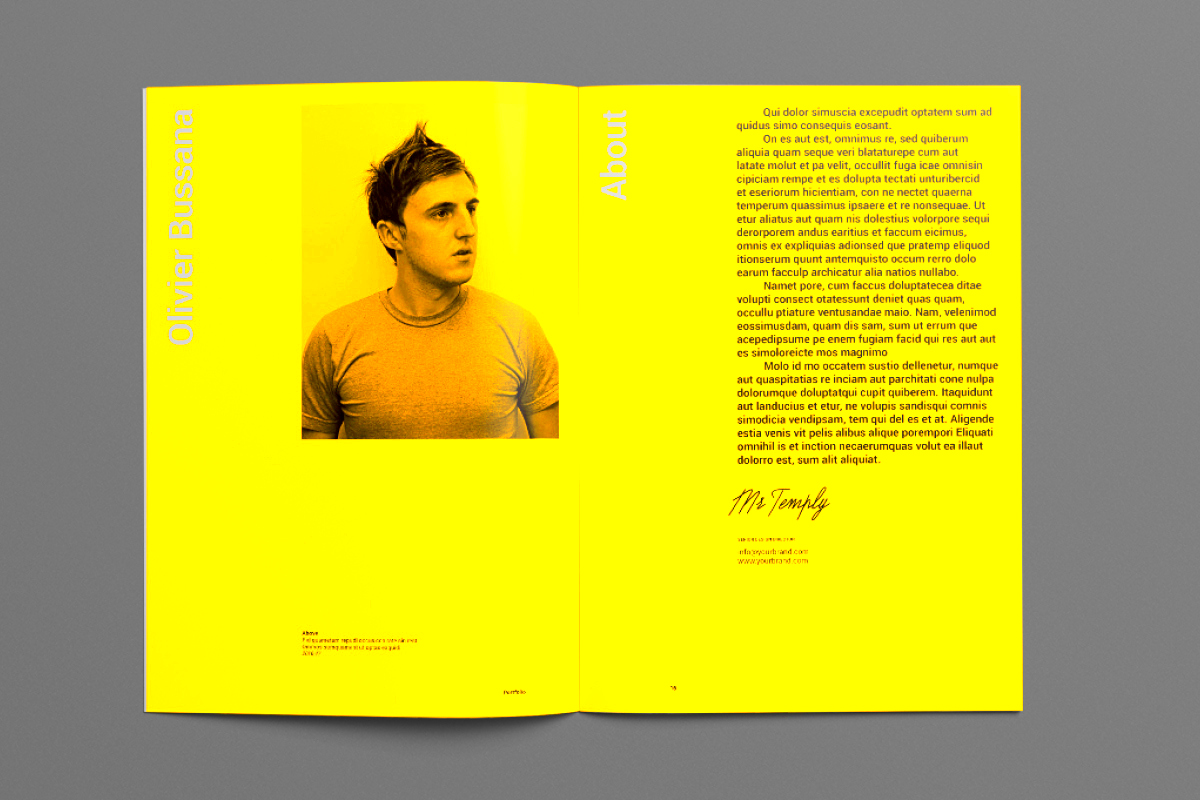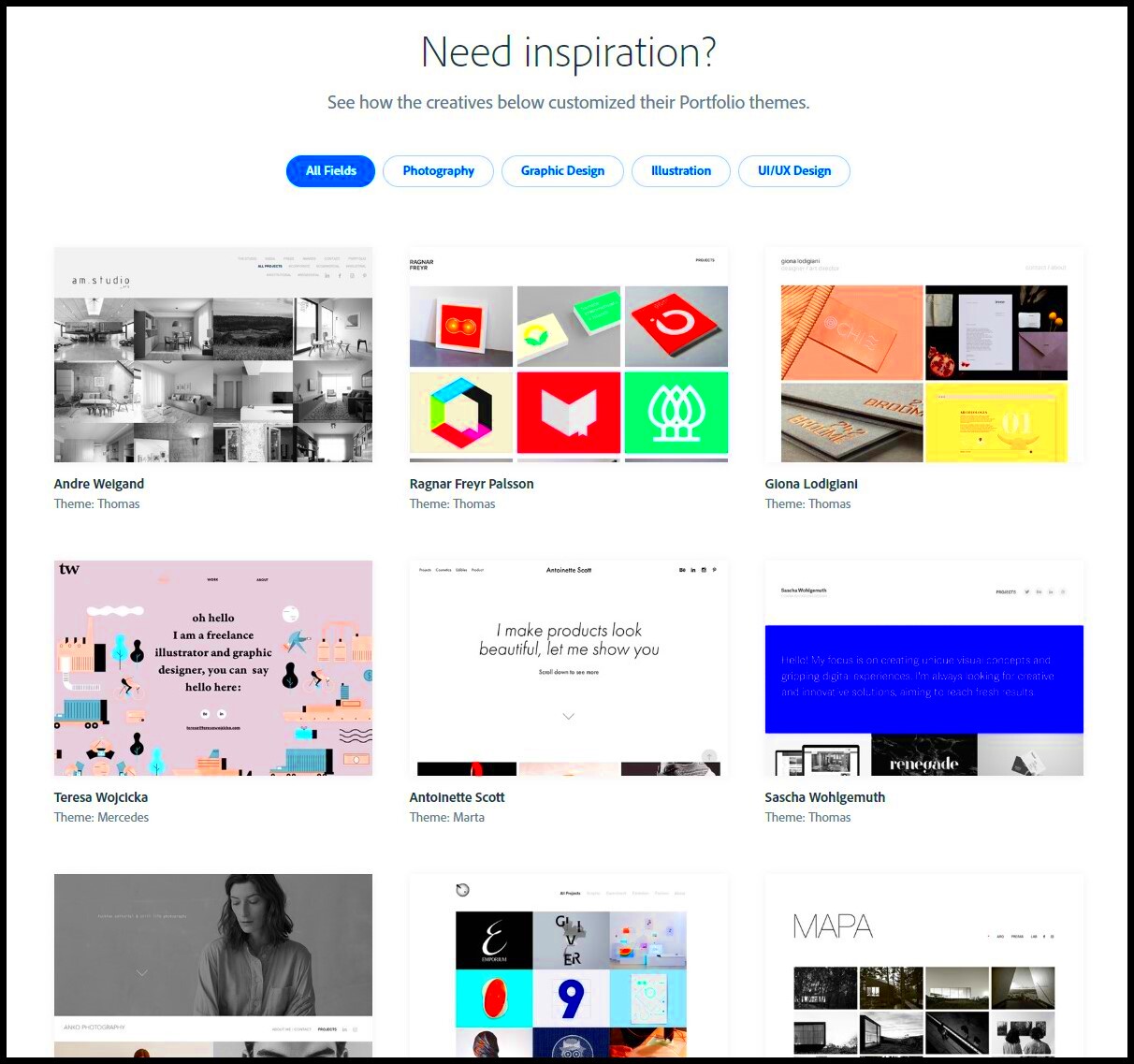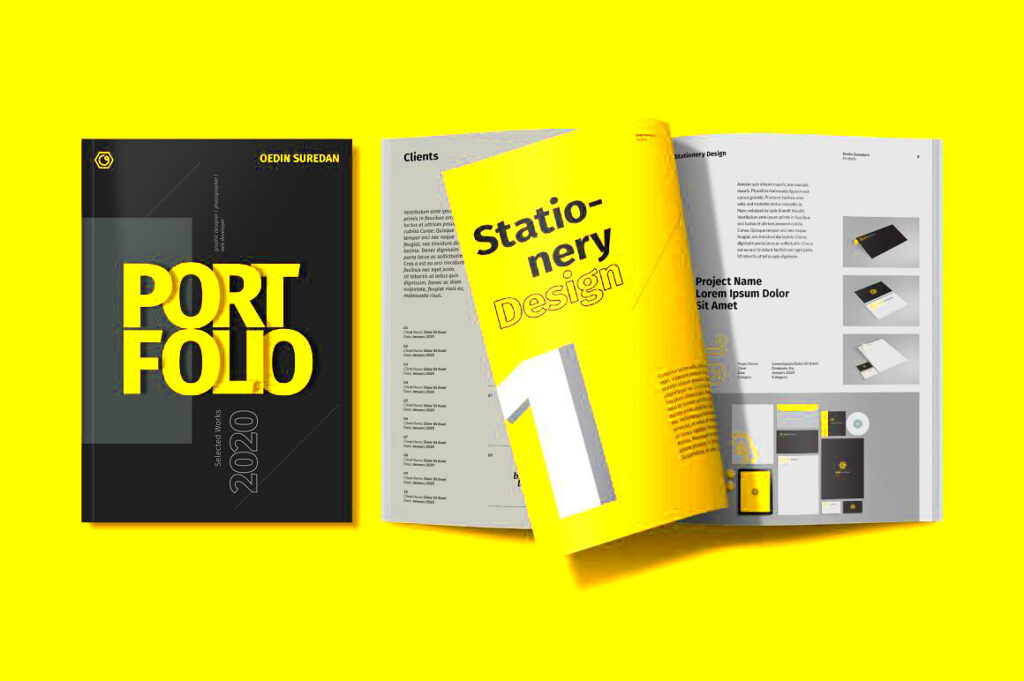In the beginning of my path as an artist I underestimated the importance of having a portfolio to display my creations. It seemed like an item on my checklist at the time. However as time went by I came to understand that a portfolio is more than a mere assortment of projects; it represents your artistic essence. It conveys to prospective clients and partners who you are and what you bring to the table.
An impressive portfolio can lead to unexpected opportunities. It allows you to showcase your work and express your individuality. Additionally a thoughtfully crafted portfolio demonstrates your commitment and professionalism in your field. Its akin to a greeting with your audience offering them a sneak peek into your imaginative realm.
View your portfolio as a way to connect with your audience. It has the potential to open doors for job opportunities, partnerships and even friendships. In a sense it tells your story with each piece serving as a chapter. So make sure to carefully select what you include. Keep in mind that it's not solely about showcasing your skills but also about revealing a glimpse of who you are to the world.
Getting Started with Behance

Behance is an awesome platform where artists can showcase their work and network with fellow professionals. To kick things off all you have to do is set up an account, which is easy to do. I vividly recall the thrill I experienced when I joined. It was like stepping into a community of creativity where individuals come together to share their creations and enthusiasm.
After setting up your account you can dive into the platform and check out how different artists display their creations. Its a great way to draw inspiration from their unique styles and ways of showcasing art. To kick things off here are some steps to help you begin.
- Create a Compelling Profile: Use a professional photo and write a brief bio that reflects your personality.
- Upload Your Work: Start adding your projects. High-quality images and detailed descriptions are key.
- Engage with Others: Comment on and appreciate other creatives’ work. Building a network is crucial.
While exploring Behance keep it real. Showcase what truly speaks to you and infuse your unique personality into your portfolio. Doing so will set you apart amidst a pool of creativity.
Also Read This: How to rotate an Image 90 Degrees?
Choosing the Right Projects to Showcase

Selecting the projects to include in your portfolio can be a real challenge. I've encountered this dilemma multiple times, often torn between my personal favorites and those that truly highlight my abilities. Finding a sweet spot between your passions and what potential clients or partners seek is crucial.
Here are a few suggestions that I have found beneficial throughout the years.
- Select Diversity: Include a mix of projects that highlight different skills and styles. This diversity will show your versatility.
- Focus on Quality: Always choose quality over quantity. It's better to showcase fewer projects that are exceptional than many mediocre ones.
- Highlight Your Best Work: Choose projects that you are most proud of. If you enjoyed the process, it often translates into the final product.
Moreover it’s important to think about the audience you want to reach. Choose your pieces carefully to resonate with them. Keep in mind that your portfolio is a work in progress so feel free to refresh it often as you develop and change as an artist. Every project marks a milestone in your path and highlighting the ones can truly make an impact.
Also Read This: How to Make Pizza by Watching Videos on Dailymotion
Organizing Your Portfolio Effectively
Arranging your portfolio is akin to mapping out your artistic path. In the beginning I used to toss everything in without considering the impact of showcasing my versatility. However I soon came to understand that an organized portfolio can truly make a difference. It not improves the way you showcase your work but also elevates the overall experience for those viewing it.
Consider your portfolio to be like a narrative, with each project serving as a section that seamlessly connects to the one. Here are some strategies to arrange your portfolio effectively.
- Group by Theme: Consider categorizing your projects based on themes or styles. This approach helps viewers understand your creative direction.
- Chronological Order: Arrange your work by date to show your growth over time. It’s fascinating to look back and see how far you've come.
- Highlight Key Projects: Create a section for your standout projects. This could be your best work or pieces that received accolades.
Moreover make sure that the navigation is user friendly. Opt for labels and maintain simplicity. I recall feeling a sense of pride when I went through my portfolio after tidying it up. Everything was well organized and I could witness my progress unfold in a wonderful way. The time you invest in structuring your portfolio will be rewarded when prospective clients or partners can effortlessly appreciate your work.
Also Read This: How to Stream Telegram Content to Your Television
Enhancing Your Portfolio with Visuals
In a portfolio how something looks matters a lot. As a creative person I’ve come to realize that pictures convey messages more powerfully than text. I still remember an instance when I showcased my work to a potential client and I could see their excitement grow as they went through my visuals. It really strengthened my conviction that impactful visuals can make a memorable impact.
Here are a few impactful strategies to enrich your portfolio using visuals.
- High-Quality Images: Always use high-resolution images. Blurry or pixelated pictures can undermine your work.
- Consistent Style: Maintain a consistent style throughout your visuals. This creates a cohesive look that makes your portfolio feel polished.
- Use Mockups: When showcasing designs, consider using mockups to present them in a real-world context. This can make your work feel more relatable.
Dont forget to add some candid shots or rough drafts. They offer a glimpse into how you come up with ideas making your work more interesting. I’ve discovered that sharing the journey of a project can resonate with people on a level. Ultimately your portfolio should showcase your individuality and expertise captivating everyone who sees it.
Also Read This: How to Download Comp Images from iStock for Your Drafting Projects
Writing Descriptions that Capture Attention
Crafting descriptions for your portfolio may seem like a task but believe me, it holds as much significance as the visuals. When I began including descriptions in my work I was pleasantly surprised by the increased level of engagement it brought. Its a chance to tell your story, explain your reasoning and establish a connection with your audience.
Here are some suggestions for creating engaging descriptions.
- Be Concise: Keep your descriptions brief but informative. Aim for clarity and avoid jargon that might confuse the reader.
- Tell Your Story: Share what inspired the project or the challenges you faced. Personal anecdotes can make your work more relatable.
- Highlight Key Features: Focus on what makes each project unique. Whether it's a specific technique you used or a particular challenge you overcame, make it stand out.
Also pay attention to the vibe of your words. Let your unique flair come across. I’ve noticed that a friendly tone can really establish a bond with those reading. Remember your portfolio isn't solely a display of your creations; it's an opportunity to reveal a part of who you are to the universe. So invest effort into creating descriptions that strike a chord with your audience and see how it enhances your portfolio.
Also Read This: How to Download a Video from LinkedIn
Sharing and Promoting Your Portfolio
After putting in the effort to build your portfolio its time to showcase it to others. I still recall the moment I made my portfolio accessible online for the first time; a blend of thrill and anxiety washed over me. How would people respond? Would they value what I created? Although sharing your portfolio may seem intimidating it also ranks among the most fulfilling aspects of being an artist.
Here are some strategies to showcase your work portfolio.
- Utilize Social Media: Platforms like Instagram, Facebook, and LinkedIn are fantastic for showcasing your work. Share snippets of your portfolio, behind-the-scenes processes, and links to your full portfolio. Engaging with your audience can build a community around your work.
- Network within Creative Communities: Join groups or forums where other creatives gather. Share your portfolio there, and be open to feedback. I’ve found that constructive criticism from peers can lead to growth and new ideas.
- Attend Events and Workshops: Participate in local events or workshops related to your field. Carrying a digital or printed version of your portfolio can help you connect with potential clients or collaborators. It’s amazing how a simple conversation can lead to new opportunities.
Lastly, dont overlook the impact of spreading the word. Share your portfolio with friends, family and coworkers. You never know who might pass it along to someone in need of your expertise. Keep in mind that showcasing your work is all about building relationships and creating opportunities. So, enjoy the journey and let your imagination sparkle.
Also Read This: How to Make Rainbow Cake at Home with Easy Recipe Tutorial
Frequently Asked Questions
When it comes to building and overseeing a portfolio it’s normal to have inquiries. I’ve experienced the same, contemplating even the minutest specifics. To address some of your worries here are some commonly asked questions regarding portfolios.
- How many projects should I include in my portfolio? It’s better to focus on quality rather than quantity. Aim for 5-10 of your best works that showcase your skills and range.
- What format should my portfolio be in? You can create a digital portfolio, which is easy to share, or a physical portfolio for in-person meetings. Choose the one that best suits your audience.
- How often should I update my portfolio? Regular updates are important. Whenever you complete a new project or improve existing ones, take the time to refresh your portfolio to reflect your latest skills.
- Should I include personal projects? Absolutely! Personal projects can showcase your passion and creativity. They also give insight into your style and interests.
These frequently asked questions can assist you in your journey of building a portfolio. Feel free to reach out for additional guidance or consult fellow members of the creative community. Keep in mind that every artistic path is distinct and sharing knowledge with one another enriches the experience.
Wrapping Up Your Portfolio Design Journey
As you wrap up your portfolio creation process take some time to think about what you’ve achieved. Building a portfolio isn’t merely about gathering pieces; it’s an exploration of your identity and a way to showcase your uniqueness. I still remember the satisfaction I experienced when I completed a portfolio that genuinely reflected my creative essence.
During this journey you’ve grasped how crucial it is to stay organized make things visually appealing and weave a narrative. Your portfolio stands as proof of your effort and commitment and it has the potential to unlock numerous possibilities. As you progress keep these essential aspects in your thoughts.
- Stay Authentic: Your portfolio should reflect who you are as a creative. Let your personality shine through every project.
- Keep Evolving: As you grow in your craft, your portfolio should grow with you. Regularly update it to showcase your latest work and skills.
- Seek Feedback: Don’t shy away from sharing your work with others. Constructive feedback can lead to improvements and new ideas.
Ultimately, keep in mind that your portfolio is a work in progress. Its not fixed; it should evolve along with you. So, embrace the process stay enthusiastic and continue to create. The world is eager to witness what you bring to the table!
